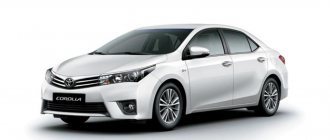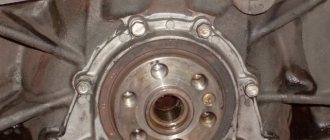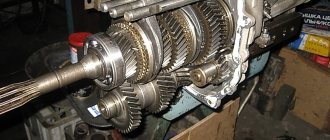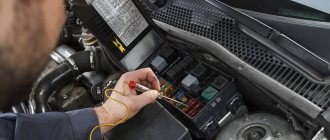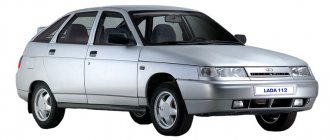25.01.2021
no comments
19338
Cars with automatic transmissions are gaining more and more popularity among drivers of different ages and experience, so questions about the operating features of automatic transmissions are very relevant. Let's take a closer look at how to drive a car with an automatic transmission and give you many useful life hacks.
First, we will talk about the principle of operation, the main transmission modes and the rules for shifting gears. And if you immediately want to learn how to learn to drive a car from scratch with an automatic transmission, scroll through the article below. But we recommend that you first study the basic principles and then move on to the rules of automatic control.
Features of cars with automatic transmission
An automatic transmission is a complex device that allows gear ratios to be switched without driver intervention. For a driver uninitiated in the technical intricacies, cars with manual transmission and automatic transmission are not much different: the gearbox control lever has different positions, and in a car with an automatic transmission there are only two pedals (gas and brake). As a result, it is easier for the driver to get moving; he does not need to be distracted by changing gears, which makes the driving process more comfortable.
A car with automatic transmission is not without its disadvantages:
- Fuel consumption increases in city traffic if the driver is inexperienced;
- most types of cars with automatic transmission cannot be towed for a long time on a flexible or rigid hitch; the front wheels must be suspended (only some modern models are exempt from this);
- you cannot overload the vehicle and it is not advisable to attach a trailer to it (a minus for summer residents and residents of rural areas who traditionally use a passenger car instead of a truck);
- the need for more careful maintenance;
- high cost of repairs in case of automatic transmission failure.
The principle of driving a car with an automatic transmission differs in many ways from a manual one. In order to know how to change gears on an automatic transmission, you need to have an idea of its operating modes and operating features in different conditions. Most drivers don’t know about this, which is why they stop at car repair shops more often than they otherwise would.
Basic operating modes of automatic transmission
If you look closely at the selector (the block with the control lever and additional buttons), you can see various letters - “P”, “N”, “R”, “D”, “M”, “S” and others. They indicate operating modes and serve as prompts for the driver. To know how to drive an automatic transmission correctly, you need to understand the purpose of the modes.
The main operating modes of the automatic transmission are:
- “P” (from English Parking) - parking. In this mode, the car engine is disconnected from the transmission, the drive wheels are blocked (shaft blocking). The position is used to start the engine; also in this mode you can replace the parking brake if the car is parked on a slight slope.
- “R” (from the English Reverse) - reverse gear. The mode is intended for reversing and can only be activated after the vehicle has come to a complete stop.
- “N” (from the English Neutral) - neutral position. The engine is disconnected from the transmission and the drive wheels are not locked. Turns on during a short stop or to tow a vehicle for a short distance.
- “D” (from the English Drive) - forward movement. The main mode when traveling, used when driving under normal conditions.
- “M” (from the English Manual) - manual gear shifting. This mode is not available on all cars and is used when driving in difficult conditions: on a bad road or off-road, when braking the engine.
On some cars, often sports cars and positioned as such by the manufacturer, there is another main mode “S” (from the English Sport). It provides higher acceleration dynamics, which is why it is often used by fans of sports driving or when overtaking.
On most cars, the modes are installed in exactly the same sequence as in the list. This is stated in American standards, which many manufacturers adhere to.
Additional automatic transmission operating modes
Modern vehicles are characterized by a large number of automatic transmission operating ranges, therefore there may be other, additional modes. Some selector handle positions may have a different designation:
- D or O/D - overdrive. A mode that allows driving with automatic switching to a higher gear. Most often used on country trips.
- D3 or O/D OFF - overdrive disable mode. On vehicles with four gears, the fourth gear is disengaged, which protects the torque converter clutch from repeated locking. The mode is used for driving around the city and for engine braking.
- S or “2” - the range of low gears is activated (first and second or only second). The mode is used when driving on a slippery road. Sometimes called "winter mode" and denoted by the letter "W".
- L or “1” - first gear only mode.
Some models also have a number of auxiliary modes. For example, you can find the “E” mode - economical. It allows you to achieve smooth acceleration and travel, thereby saving fuel. Special (additional) modes are activated using a button or switch, which may be located near the selector or on the instrument panel.
A list of all designations with a brief description can be found in the table.
| Designation | Short description |
| P | Parking mode. Also used to start the engine. |
| R | Reverse mode |
| N | Neutral. Used for short-term stops. |
| D | Forward movement. |
| D3 | The forward movement is no higher than in third gear. Suitable for driving in dense city traffic. |
| L | Engaging downshift. |
| M | Manual gear shift |
| O/D | Overdrive mode |
| S | Sports mode. On some models this is how the low gear range is designated. |
| E | Eco mode |
| W | Winter mode |
Also, many cars with automatic transmission have a kickdown mode. It turns on automatically when you sharply press the gas pedal to the floor. By shifting down 1-2 gears it gives faster acceleration or acceleration. Kickdown mode is often used when overtaking.
The designation and location of the modes may vary from vehicle to vehicle. To know for sure how to use an automatic transmission correctly, study the documentation for your model.
Is it possible to change automatic transmission speeds on the go?
The selector lever can only be moved to certain positions when the vehicle is moving. It is strictly forbidden to turn on the “P” (parking) and “R” (reverse) modes while driving. Violation of this rule can lead to serious damage to the automatic transmission. Switching on the “N” (neutral) mode while driving and coasting in a car with an automatic transmission is technically possible, but is not recommended for safety reasons. In this position of the selector handle, the transmission of torque from the engine to the wheels is interrupted, and therefore they can spin as they please. When the road surface changes (ice, crushed stone, puddles), as well as during sudden braking, the car may skid.
As for shifting gears to an upshift or, conversely, downshifting, most automatic transmissions allow you to do this without negative consequences. Depending on the traffic situation, sometimes this is even necessary. For example, downshifting allows for effective engine braking.
We recommend learning the basics of driving a car for beginners and moving on to driving an automatic car.
How to use the modes?
Parking position P
In this position of the gear selector lever, no power is transmitted to the wheels, and the wheels of the drive axle are locked. At the same time, the ignition switch is unlocked, and only in this position can the key be removed from the ignition switch.
The lever can only be moved to the “P” position when the car is stationary. Selecting the “P” mode even at low speed (up to 5 km/h) can lead to a sudden stop of the car or, most likely, to a breakdown of the wheel locking mechanism.
Interestingly, even in cars with an electronically controlled automatic transmission, in which the gear selection lever is designed as an electronic joystick and has protection against selecting the wrong driving mode, the system will allow the “P” mode to be activated at low speed, which can seriously damage the gearbox.
After the vehicle has come to a complete stop, first move the lever to the “N” (neutral) position, then apply the parking brake, and only then set the lever to the “P” position. This way, any unwanted loads acting on the box will be avoided.
Neutral position N
Position N is located between the driving modes “R” and “D”. The box does not transmit traction to the wheels, but the car can roll.
Although turning on N mode while driving will not immediately damage the transmission, this should not be done due to overheating of the oil and accelerated wear of the moving parts of the automatic transmission.
The “N” mode allows the car to be towed, but it’s best not to do this. As a last resort, you can drive a few hundred meters at a minimum speed (10-20 km/h).
Remember the rule - cars with a broken automatic transmission are transported, not towed.
Reverse gear R
You can turn on reverse (mode R) only after stopping the car. You should press the gas and start driving after a short pause to avoid jerking. This is especially true for older cars.
The fact is that the reverse gear in some automatic transmissions is engaged with a noticeable delay, which increases with wear and when the oil temperature drops (for example, after a long period of inactivity in the cold). In the "R" position, you will be able to turn off the engine, but will not be able to remove the key.
Forward gear D
Drive mode is designed for forward movement and is activated after the car has stopped. While driving, "D" can only be activated from other forward driving modes, such as "2" or "3".
When you select mode “D” and release the brake pedal, the car starts moving, adding gas causes acceleration, and pressing the brake causes braking. Gears change automatically and without jerking if the automatic transmission is working properly.
When stopping briefly at a traffic light, you should not move the lever to the “N” or “P” mode. This leads to unnecessary wear of the parts responsible for changing the driving mode. Apply the brake and hold it until you can continue driving.
Starting a car with automatic transmission
Starting the engine of a car with an automatic transmission is not as difficult as it might seem. First you need to set the selector lever to the “P” position. You can start the internal combustion engine from neutral mode, but manufacturers recommend using the parking mode. If the lever is in any other position, for example, “D”, the engine will not be able to start.
After turning on the desired mode, you need to press the brake pedal. This is also the recommendation of most manufacturers. In practice, you can start the engine without a brake if the “P” mode is turned on, but in the neutral position you must press the brake. However, for convenience, it is better to press the brake pedal: this way you can immediately switch to work mode and start moving. By depressing the brake pedal, you can start the engine.
The step-by-step process of starting the engine on an automatic transmission looks like this: select the “P” mode, press the brake pedal, start the engine.
How to start a car with automatic transmission?
When starting an engine with a manual transmission, one condition is necessary - that the gearshift lever be in the neutral position. In some cases, the clutch may be depressed. This is one of the safety measures to prevent the vehicle from spontaneously starting to move when the gearbox is engaged with the wheels.
The machine will not have such problems when starting, but the manufacturer nevertheless decided to play it safe and made its own startup algorithm. For example, to start a car with an automatic transmission, you need to fulfill several conditions:
- The selector must be in position P or N.
- The brake pedal must be depressed.
It is worth considering that the selector cannot be moved out of parking until the ignition is turned on and the brake pedal is depressed.
How to properly start driving a car with automatic transmission
Operating the pedals on an automatic machine is extremely simple, which is what captivates many drivers. Starting to drive in the selected mode is quite simple: you just need to smoothly remove your feet from the brake pedal. The car will then begin to move. If necessary, you can add gas. To stop, you need to press the brake pedal again.
If we consider the process of driving a car on an automatic machine step by step, the algorithm will be something like this:
- Place the selector lever in position “P”.
- Press the brake pedal.
- Start the engine.
- Select driving mode.
- Turn on the appropriate turn signal.
- Make sure you do not disturb other road users.
- Smoothly release the brake pedal and start moving.
If you need to reverse during a trip, turn on the “R” mode only after the car has come to a complete stop. The same applies to the “P” mode.
When starting to move, you need to remove your foot from the brake pedal only after a characteristic jolt occurs, signaling that the gear is engaged.
How to use an automatic transmission correctly
Using an automatic transmission is actually very simple:
- Press the brake pedal with your right foot,
- Use the automatic transmission selector knob to select the desired mode,
- Release the brake pedal and (lo and behold!) the car starts moving.
To accelerate, use the accelerator pedal (gas pedal), and to stop the car, use the brake pedal. , you must switch the automatic transmission selector to position P or N. All! You have learned how to use automatic transmission (for more details, see the video at the end of the article).
What do the letters on the automatic transmission selector mean?
The automatic transmission selector can be switched to several positions (automatic transmission operating modes):
- Movement (Drive) is designated by the letter D and is used to move forward.
- Neutral ( N ) disconnects the torque converter from the transmission.
- Park ( P ) is similar to neutral, but with it the output shaft of the box is locked, so you can only turn it on when the car is stationary, otherwise the stopper is easy to break.
- Reverse ( R ) does not need any special comments.
- The selector positions indicated by numbers (1, 2, 3) do not allow the automatic transmission to shift higher than the corresponding gear.
- Some automatic transmissions have a “ Winter ” mode (indicated by the letter W or snowflake) for driving on slippery roads.
- There may also be a “ Sport ” mode ( S ), in which the transition to higher gear is carried out at higher speeds, providing the car with intense acceleration.
How to stop driving with automatic transmission correctly
Stopping driving a car with an automatic transmission is as easy as starting off. The algorithm will be as follows:
- Stop the vehicle using the brake pedal.
- Without removing your feet from the brake pedal, apply the parking brake
- Enable “P” mode.
- Remove your foot from the brake pedal.
- Turn off the ignition.
When parking on a level surface, you can not apply the parking brake and leave the car in “P” mode. If the slope angle is more than 15°, then the use of the handbrake is mandatory.
How to tow a car with automatic transmission
A car equipped with an automatic transmission cannot be towed for a long time with the engine switched off. Due to the design features, lubricant is supplied to the automatic transmission under pressure, which occurs only when the engine is running. Therefore, towing is only possible in neutral and with the engine running. Another option is to hang the front (drive) wheels.
If the transmission or engine does not work, the only way to transport the car from one place to another is with a tow truck. An exception will be some German models, which can be towed for a distance of no more than 50 km at a maximum speed of 50 km/h.
Rules for towing a car with automatic transmission
Towing is an extreme operating mode. The fact is that in order to lubricate and cool the parts in the machine, the pump must create the necessary liquid pressure. However, it comes into operation only after the internal combustion engine is started. It turns out that when towing, the gearbox will run dry. But this does not mean that towing is prohibited. Automakers have introduced the “rule of 30” for this purpose.
Rule 30 involves towing a vehicle with an automatic transmission at a speed of no more than 30 km/h, for a distance of no more than 30 kilometers and for a total duration of no more than 30 minutes. In this case, the level in the gearbox should be maximum.
After half an hour of driving, you need to stop and give the oil a chance to cool. Of course, many automatics have longer towing capabilities. But, as a rule, these are SUVs and their movement is carried out with the driveshaft removed. In this case, the manufacturer must mention this in the operating instructions.
The best way to deliver such a car for repair is considered to be transportation by tow truck. It is much safer, simpler and not harmful to the box.
Driving an automatic in traffic jams and traffic lights
Driving a vehicle with an automatic transmission in traffic jams and at traffic lights is easier than driving a vehicle with a manual transmission. In our case, you can hold the car in place by pressing the brake pedal.
If the traffic jam is serious and the leg gets tired of holding the pedal, experienced drivers recommend turning on the “P” mode and giving the leg a rest. As soon as the car in front starts moving, you can press the brake pedal and turn on “D” mode.
The same method should be used during short stops on a hot day to prevent overheating of the oil in the automatic transmission.
Automatic driving for beginners
So, the automatic transmission selector lever has several main positions: P, R, N, D, D2 (or L), D3 or S. Let's look at each one separately.
- The position of the gear shift lever is in the “P” position - parking. The vehicle cannot move, but in this mode the engine can be started.
- The position of the gear shift lever in the “R” position is reverse. Reverse. This position cannot be used while the vehicle is moving forward. In this mode, the engine cannot be started.
- "N" - neutral.
The car can move freely. In this mode, starting the engine and towing the car are allowed. The position of the gear shift lever is in position “D” – drive (main driving mode). This mode provides automatic shifting from first to fourth gear (recommended for use in normal driving conditions). - Position the gear shift lever in position D3 (S) second range of low gears (on roads with slight inclines and descents) or D2 (L) range of low gears (off-road).
Not all automatic transmissions have such switching modes; it all depends on the modification of the transmission. The lever can be switched from position D to position D2 or D3 and back while the vehicle is moving. Automatic transmissions can also be additionally equipped with gear shift modes: N – normal, E – economical, S – sport.
How to brake with an automatic engine
The implementation of engine braking on an automatic will depend on the specific model. There are cars in which human participation in selecting a gear is not provided, and there are cars with different auxiliary modes. Here is just one of the engine braking algorithms:
- Turn on the “O/D” (overdrive) mode.
- Wait until the speed drops to 90 km/h.
- Engage second gear (D2).
- Wait until the speed drops to 50 km/h.
- Turn on "L" mode.
Study the operating instructions for your car to understand how to apply engine braking correctly and not damage the automatic transmission.
Do I need to warm up my car before driving?
In winter, especially in Russian conditions, the automatic transmission must be warmed up before driving: the oil temperature in all components must rise to operating temperature. To do this, with the engine running and the brake pedal pressed, move the mode selection lever sequentially to all positions, holding each position for 5 - 10 seconds. Then turn on the desired mode and hold the car with the brake pedal for several minutes, while the speed should be idle. Now you can start moving, but try to avoid sudden acceleration for the first few hundred meters.
Common mistakes when driving an automatic transmission
Many drivers do not know what not to do with an automatic transmission, and therefore from time to time they make various mistakes that lead to breakdowns and dangerous situations on the road. Here are the most common cases that should not be allowed:
- Driving in neutral (coasting) can cause a skid.
- Switching to “P” or “R” modes while driving leads to automatic transmission breakdown.
- Simultaneously pressing the gas and brake pedals.
- First turn on the parking mode, then the handbrake. According to the rules, you must first engage the parking brake, then the “P” range.
- Towing trailers exceeding the permissible load.
- Driving on descents in “N” mode. When you turn on the “D” mode after a long descent in neutral, the box may overheat.
- Unjustified “play” with the gas pedal when the “N” mode is on
With proper use, a car with an automatic transmission lasts a long time and pleases the owner with a comfortable ride. Mastering an automatic transmission is not difficult, so read the operating instructions for your car, arm yourself with our advice and hit the road.
Share on social networks:
More useful on the topic
How to brake correctly with manual gears: step by step for beginners
16.08.2021
Road sign 3.24 “Maximum speed limit” and its coverage area
27.07.2021

